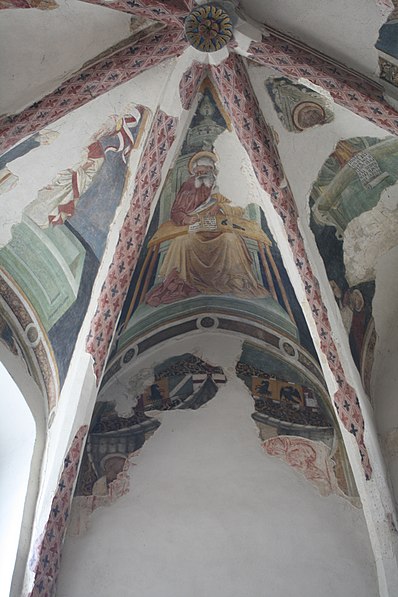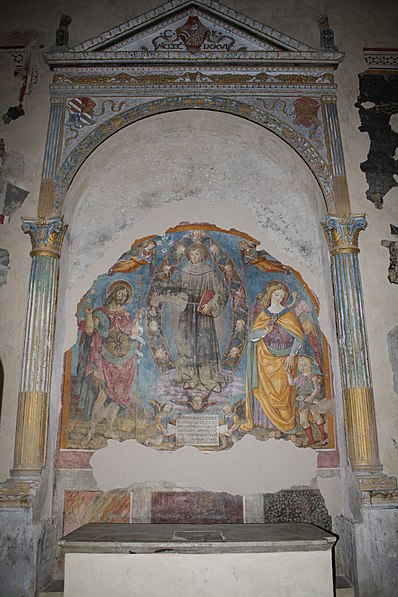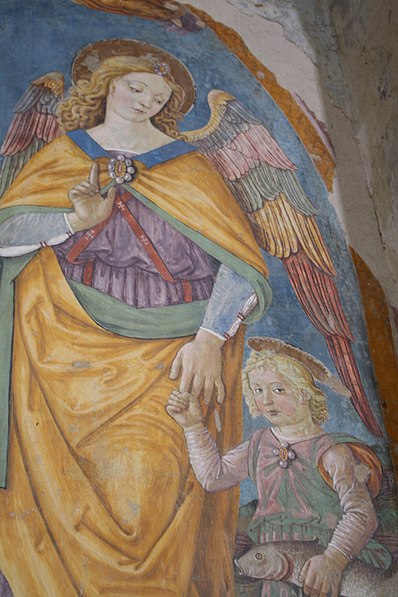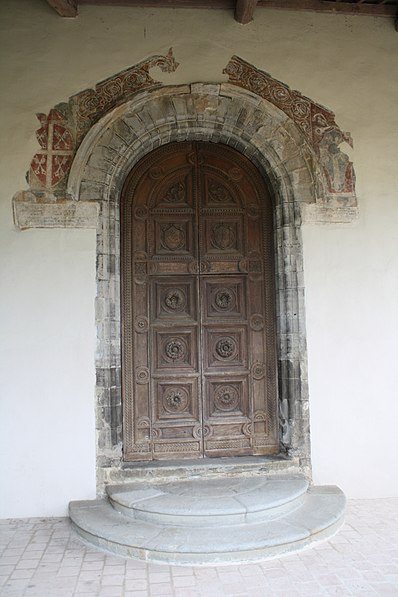Church of San Francesco, Montone
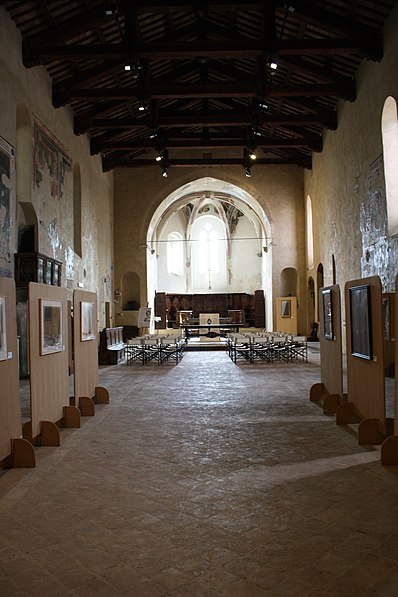
Facts and practical information
The church of San Francesco is a liturgical building in Montone, Umbria.
The church was erected on the site where Castelvecchio, one of the six castles built for defensive and control purposes, of the valley between the Carpina and Tiber rivers, was built in medieval times. It was here that the order of Friars Minor, until then settled in St. Ubaldo outside the walls, was established from April 29, 1308, under the pontificate of Clement V and with the consent of the Council of Vienne.
The architectural typology of the church is typical of the Mendicant Orders: simple and linear forms, single nave, polygonal apse with finely frescoed ribbed vaults and trussed roof. It is canonically oriented to the west and light penetrates through the three apsidal windows, including a central mullioned window, and through the six single-lancet windows in the side walls. Attached to the facade is a portico probably added between the 17th and 18th centuries. Adjacent to the left wall of the church, however, is the convent.
The church, completely frescoed since the beginning of the 14th century, was then affected by new and extensive decorative interventions, which overlapped the original frescoes three times. The highest achievements, from an artistic point of view, however, occurred in the following century, when this building became the Fortebracci family church. Always linked to the Franciscan Order, the aforementioned lineage contributed generously to its embellishment by having altars erected and equipping it with furnishings and paintings. The works they commissioned reflect the courtly taste of their family culture.
Between 1423 and 1424, commissioned by Braccio da Montone, Antonio Alberti da Ferrara was called upon to paint the Episodes from the Life of St. Francis and the scenes of the Last Judgment in the undercroft.
In 1486 Count Carlo Fortebracci, son of Captain Braccio da Montone, had an altar erected halfway up the left wall of the church as an ex voto for the birth of his son Bernardino. The tympanum above the altar screen contains the Fortebracci family coat of arms recognizable by the half ram with the letters C 0 Count and K = Karrolus Carlo Fortebracci on the sides, indicating the name of the patron. Also present is the Malatesta coat of arms with the two elephants, a clear reference to the noble Rimini family to which Carlo's wife Margherita belonged. His son Bernardino, as visible on the inscription on the plaque below, commissioned the Perugian Bartolomeo Caporali to paint a fresco to complete the altar desired by his father. In the center of the scene stands St. Anthony of Padua between the Baptist on the left and Archangel Raphael holding Tobiolo's hand on the right.
The following centuries saw no structural changes or pictorial interventions; on the contrary, destructive processes such as the one operated by the French occupation followed.
In 1810 the convent was temporarily closed, and in 1866 it became state property.
Restorations in the 1990s led to the restoration of the entire complex and transformed part of the former convent into the present Pinacoteca and Ethnographic Museum The Talking Drum.
Many works from both the former church of St. Francis and other churches in the municipal area now find their place within these spaces.
Montone
Church of San Francesco – popular in the area (distance from the attraction)
Nearby attractions include: Rocca of Umbertide, Chiesa della Madonna della Reggia, Mola Casanova, Museo Civico San Francesco.


